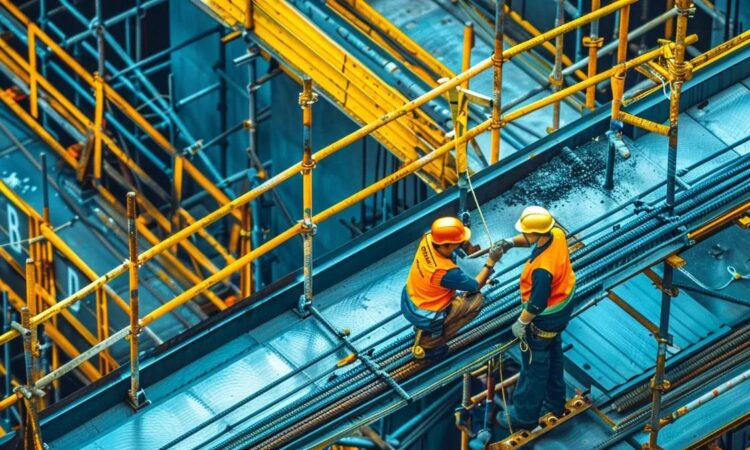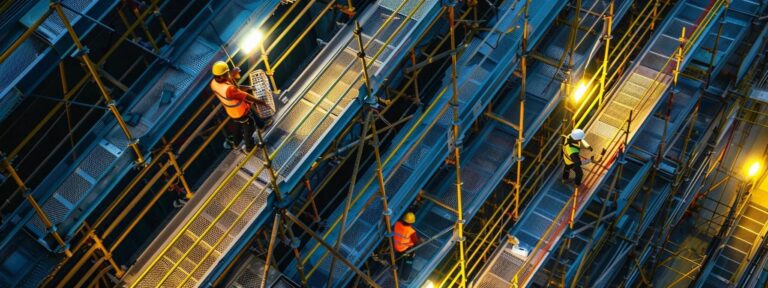Rail vs Flex Cable Fall Protection: Which System Fits Your Site?
Fall protection systems are critical for workplace safety, especially in high-risk environments across industries-we-serve. Many employers now consider lifeline systems as a viable option for preventing falls. Choosing the right system requires understanding the available options, such as guardrail systems, their benefits, limitations, and how they suit specific work environments. This article examines rail and flex cable fall protection systems, evaluates ladder systems in close comparison, and introduces barrier systems as an alternative. It further offers guidance on design-installation best practices and emphasizes annual maintenance for ensuring long-term safety. For more detailed insights or to get-a-free-quote, please visit usfallprotection. For a true perspective on our commitment to safety and innovation, check our about us page and explore our blog.
Understanding the Fundamentals of Rail Fall Protection Systems
rail fall protection systems act as a rigid lifeline to prevent workers from falling off elevated surfaces. in addition to lifeline systems, the integration of guardrail systems further enhances safety measures on elevated platforms. these systems are supported by expert design-installation practices, ensuring that fixed or semi-fixed rails provide reliable support and stability. regular annual maintenance and complementary ladder systems help maintain system integrity over time. many industries-we-serve trust our blog for insights on usfallprotection, and you can always get-a-free-quote to address your specific needs.
Defining Rigid Rail Fall Protection Mechanisms
Rigid rail systems, including guardrail systems and lifeline systems, offer a stable, immovable barrier that supports a worker’s weight during a fall. Generally constructed from steel or aluminum with robust, permanently installed anchoring points that adhere to meticulous design-installation practices tailored to industries-we-serve, these systems limit both horizontal and vertical movement. Their design is optimized for load distribution, often verified through detailed Finite Element Analysis during certification, ensuring minimal deflection and predictable performance. For further insights on reliable fall protection solutions, be sure to explore usfallprotection and get-a-free-quote.
Identifying Key Advantages of Rail Fall Protection Systems
Rail systems provide predictability due to their fixed installation and design-installation process, enabling precise loading calculations. Their minimal movement after installation reduces the risk of misconfiguration, and weather-resistant materials ensure durability under harsh conditions—a benefit often recognized by industries-we-serve. In many facilities, rail systems are complemented by ladder systems and guardrail systems to further improve worker safety. Studies indicate that well-maintained rail systems, supported by annual maintenance protocols and integrated usfallprotection measures, can reduce fall-related injuries by up to 40%, making them an essential component in high-risk workplaces. For additional insights, visit our blog or check out the get-a-free-quote option for more details on installation strategies.
Recognizing Common Applications for Rail Safety Solutions
Rail safety systems are ideal for installations that require high stability, playing an essential role in industries-we-serve sectors. In fact, many facilities benefit from design-installation processes that ensure comprehensive system integration. They are commonly used in construction, roofing, and annual maintenance on elevated platforms where guardrail systems help ensure worker safety; incorporating ladder systems and lifeline systems can further bolster worksite security while usfallprotection measures reduce risks on bridges, mezzanines, and loading docks. Installed correctly, these systems allow workers to move along predetermined paths while limiting the distance they might fall.
Noting Potential Drawbacks of Rail-Based Systems
Despite their benefits, rail systems serve a range of industries-we-serve but can limit mobility in dynamic work environments. Installation (design-installation) may require structural modifications—including adjustments to ladder systems—and a higher initial cost, along with longer downtime during setup. Adjustments can be complex when workflows change, and periodic inspections paired with annual maintenance are critical to ensure anchorage integrity.
Exploring the Essentials of Flex Cable Fall Protection Systems
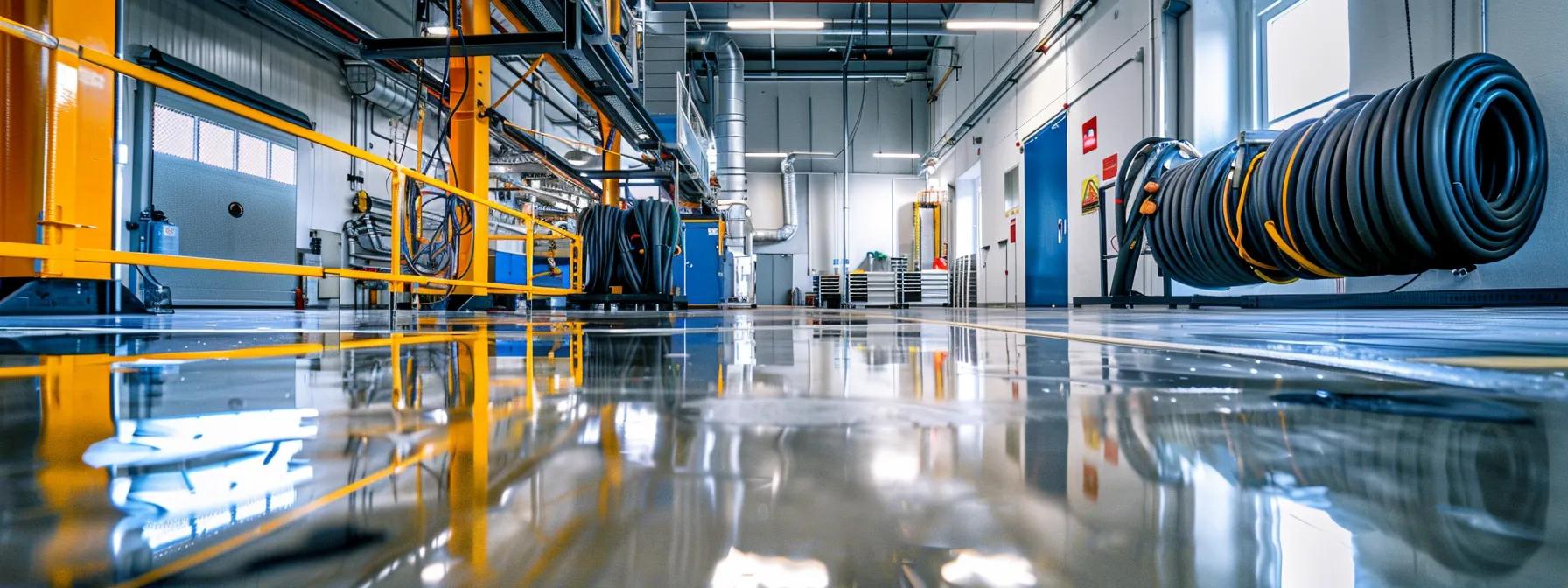
Flex cable fall protection systems use flexible, high-strength cables to arrest falls. They offer an alternative where rigidity is less critical and adaptability is emphasized.
Characterizing Flexible Cable Fall Arrest Technology
Flexible cable systems employ stainless steel cables or synthetic fiber ropes (design-installation) connected to anchorage points and safety harnesses (lifeline systems). Their inherent flexibility absorbs energy during a fall via a shock-absorbing mechanism that minimizes sudden deceleration forces. These systems conform well to varied topographies and can be re-routed or reconfigured (annual maintenance) with relative ease compared to rail systems.
Highlighting Main Benefits of Flex Cable Fall Protection Systems
Flex cable systems are prized for their adaptability and ease of installation, especially when paired with modern design-installation solutions. They integrate into existing structures with minimal modifications and are favored in industries-we-serve projects, reducing weight for easier transport while simplifying annual maintenance routines. Additionally, their flexible design not only allows natural body movement—which can decrease fatigue—but also works harmoniously with guardrail systems to bolster safety. In dynamic work conditions, these systems can enhance worker mobility by up to 35%, improving both safety and overall performance.
Pinpointing Typical Uses for Cable Safety Installations
Flex cable protection is especially suitable for irregular work surfaces or temporary setups. They are often used in scaffolding, temporary platforms, and retrofits in older facilities where rigid installations are impractical. Their versatility makes them appropriate for industries ranging from construction to offshore maintenance. For a complete service package—including design-installation and annual maintenance solutions—our industries-we-serve approach ensures reliable support. To learn more about these tailored services, please get-a-free-quote.
Acknowledging Possible Limitations of Flex Cable Systems
However, the elasticity of cables in ladder systems may result in increased fall clearance distances, requiring careful design-installation planning to prevent collisions with underlying guardrail systems. The dynamic nature of these lifeline systems necessitates periodic replacement or retensioning, and exposure to corrosion, fluctuating temperatures, and UV radiation may shorten cable life if not regularly inspected and maintained through annual maintenance procedures.
Directly Comparing Rail and Flex Cable Fall Protection
A direct comparison reveals the distinct strengths and weaknesses of rail versus flex cable systems across several parameters.
Analyzing Installation Processes for Rail and Cable Systems
rail systems (including guardrail systems) require more time and structural modifications because they need fixed anchoring, precise alignment, and possibly custom fabrication. In contrast, flex cable systems optimized for design-installation can be installed more rapidly with minimal disruption since they typically utilize existing structural points. Although rail systems, often combined with lifeline systems, have higher initial costs, they may offer long-term stability in environments with constant exposure to fall hazards.
Contrasting Fall Clearance Needs Between Rail and Flex Cable
Rail systems, due to their rigidity, minimize fall clearance and deceleration distance. ladder systems and lifeline systems are often integrated to enhance overall safety performance. Conversely, flex cable systems absorb energy over longer distances, increasing the clearance required. In such cases, guardrail systems provide additional support in high-risk environments. This difference demands additional protective planning and design-installation considerations, as recommended by usfallprotection experts when using flex cable solutions in confined or obstructed spaces.
Evaluating User Movement on Rail Versus Cable Setups
Rail systems provide a fixed pathway that enhances security but can restrict lateral movement. In many setups, guardrail systems are integrated to further bolster safety. Flex cable setups, on the other hand, offer dynamic support that moves with the worker, reducing fatigue and accommodating different work postures through proper design-installation. Nevertheless, this mobility requires proper training so that workers understand the system’s behavior and the importance of usfallprotection during both normal operations and falls.
Comparing Long-Term Maintenance for Each System Type
Long-term, rigid rail systems are generally robust, requiring periodic checks of joints, fasteners, and anchorage points as part of annual maintenance and design-installation best practices. In contrast, flex cable systems often need more frequent inspections and tension adjustments due to wear and environmental effects, and may benefit from integrated usfallprotection measures. Although rail systems involve higher upfront maintenance investments, improper monitoring of flex cable systems can lead to escalating maintenance costs over time.
Assessing Cost Factors for Rail and Flex Cable Solutions
Rail systems, such as guardrail systems, have higher initial costs because of custom fabrication and structural modifications, but their long-term durability and lower maintenance frequency can justify the investment in high-use environments. Through design-installation best practices implemented across industries-we-serve, these systems are optimized for complex projects. Flex cable systems, paired with annual maintenance strategies, tend to have lower upfront costs and greater flexibility, making them attractive for short-term projects. However, their frequent maintenance needs might increase long-term expenses in high-use settings, which is why it’s often recommended to get-a-free-quote for a comprehensive cost analysis.
Comparative Table: Rail vs. Flex Cable Fall Protection Systems
| Attribute | Rail Fall Protection Systems | Flex Cable Fall Protection Systems |
|---|---|---|
| Installation Time | Longer; requires structural modifications | Shorter; fits existing structures easily |
| Mobility | Limited; fixed pathway | Higher; allows dynamic movement |
| Fall Clearance | Minimal; rigid structure limits movement | Increased; energy absorption over distance |
| Maintenance Frequency | Lower; periodic checks suffice | Higher; frequent tension checks needed |
| Upfront Costs | Higher initial investment | Lower initial cost; potential long-term expense |
| Durability | High; weather-resistant materials | Moderate; subject to environmental wear |
| Adaptability | Low; fixed installation | High; can be reconfigured easily |
This table summarizes the primary differences, helping decision-makers weigh usability, cost, and longevity when choosing a fall protection system.
Introducing Barrier Fall Protection Systems as a Safety Option
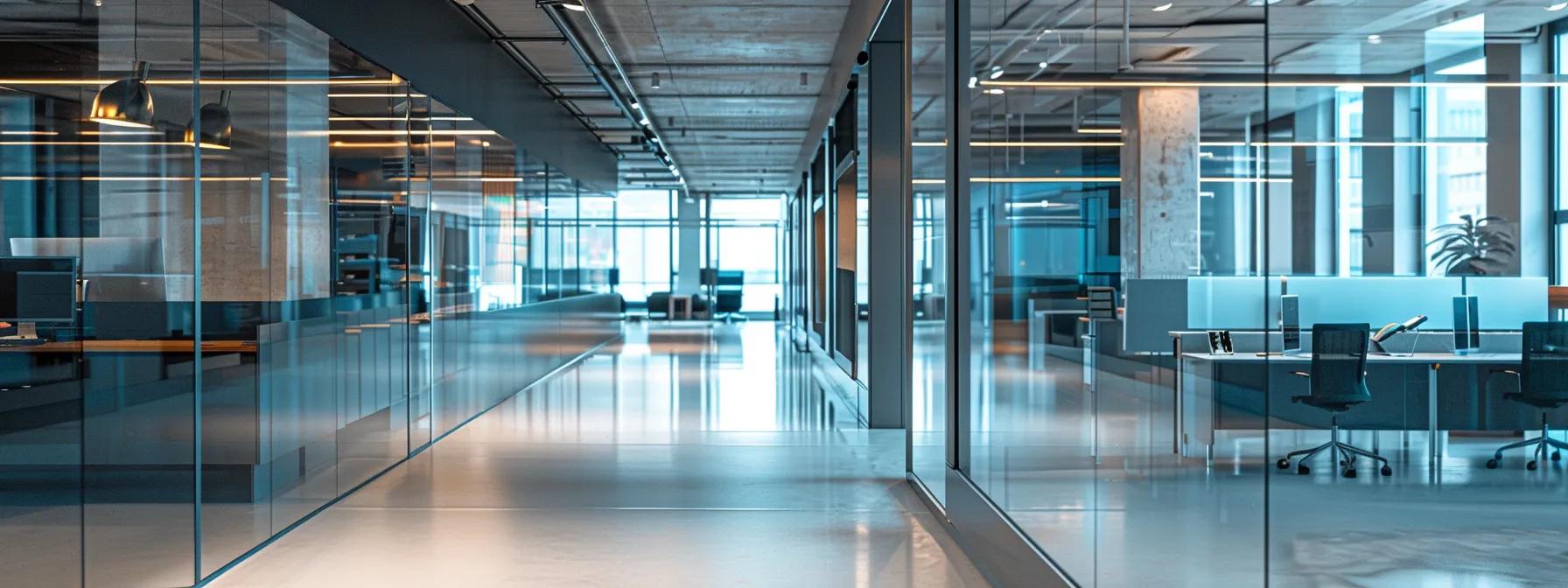
Barrier fall protection systems provide an alternative approach by physically preventing access to dangerous edges or elevated surfaces.
What Constitutes Barrier Fall Protection Systems?
Barrier systems include guardrails, fences, or barricades installed around elevated work areas. our design-installation approach guarantees that these systems are not only efficient but also tailored to unique site requirements. These physical barriers do not rely on personal fall arrest equipment; instead, they form an unyielding perimeter that prevents workers from entering hazardous zones. many industries-we-serve have come to depend on such solutions for enhanced safety and operational excellence. Materials range from metal to reinforced plastic, and designs must meet specific regulatory dimensions while accommodating annual maintenance protocols to ensure long-lasting performance.
When to Prioritize Barrier Systems for Worker Safety
Barrier systems, such as guardrail systems, are especially effective in environments where worker movement is predictable and the risk of stepping over an edge is high. They work well in permanently demarcated areas such as mezzanines, balconies, and loading docks where relying solely on personal fall arrest systems may be impractical, making annual maintenance critical in these settings. Their simple design, coupled with a proven design-installation approach, and ease of monitoring make them a dependable choice in static hazard zones.
Distinguishing Barrier Systems From Rail and Flex Cable Protection
Unlike rail and flex cable systems (as demonstrated by guardrail systems), barrier fall protection does not rely on worker behavior. While rail systems guide movement along a fixed path and flex cable systems, along with lifeline systems, provide dynamic support, barrier systems create a continuous physical boundary that workers cannot cross. This passive form of protection is particularly valuable for clearly defining hazardous areas—a benefit often highlighted on industries-we-serve—without requiring active worker intervention.
Selecting the Optimal System Based on Your Site Assessment
Selecting a fall protection system depends on a detailed site assessment that considers the work environment, frequency of use, and regulatory compliance.
Evaluating Your Work Environment for Fall Hazards
Conduct a thorough risk evaluation by identifying potential fall hazards on elevated work platforms, unguarded edges, and irregular surfaces. To bolster safety measures, integrate guardrail systems and ensure regular annual maintenance of equipment. Review historical incident data, current safety protocols, and environmental conditions like weather exposure and structural integrity. This analysis helps determine whether a rail, flex cable, or barrier system, in conjunction with lifeline systems, is most effective.
Considering the Number of Users and Work Frequency
The chosen system should match the volume of worker traffic, and ladder systems can ensure safe access where needed. High-traffic areas may benefit from the durability of rigid rail systems, complemented by guardrail systems for added stability and usfallprotection measures. In facilities with many simultaneous workers, barrier systems offer a passive yet effective solution; design-installation services can help integrate these systems seamlessly, while annual maintenance ensures ongoing safety and efficiency.
Matching System Capabilities With Your Operational Needs
Align the fall protection system supplied by usfallprotection with specific job tasks and worker mobility requirements. Long traverses along an edge may call for the stability of rail systems such as guardrail systems, whereas dynamic work environments with variable positioning might demand the adaptability of flex cable systems often coordinated through design-installation support. Barrier systems serve well in production environments where a fixed boundary is necessary—a principle embraced by industries-we-serve.
Ensuring Compliance With Fall Protection Regulations
All systems must comply with OSHA, ANSI, and other regulatory standards, which set specifications for deflection, load distribution, and installation parameters that follow design-installation best practices. Regular documentation, training, and audits, along with annual maintenance protocols, are vital to ensure ongoing compliance and reduce liability, including measures related to usfallprotection.
Making an Informed Decision for Your Site’s Fall Safety
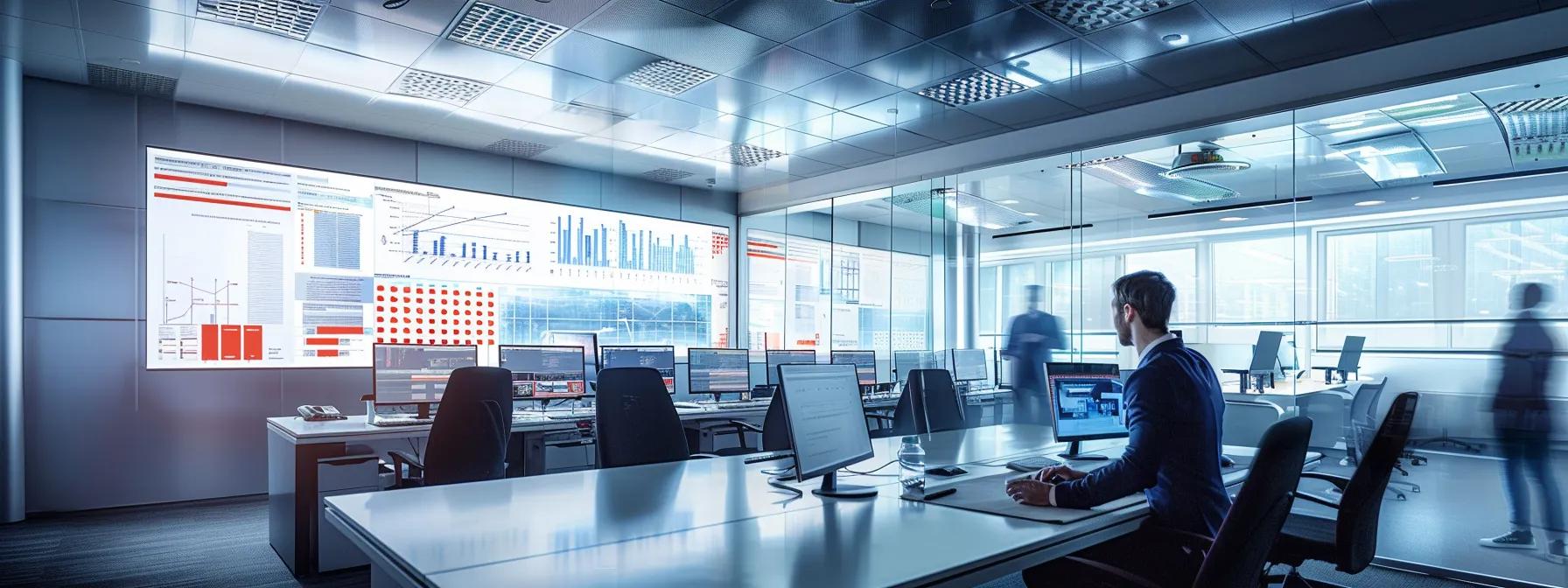
Choosing the best fall protection strategy involves examining the pros and cons of rail, flex cable, barrier systems, guardrail systems, and lifeline systems in relation to specific hazards and operational dynamics. In some cases, a layered approach using multiple systems, paired with design-installation best practices and annual maintenance protocols, may yield the best safety outcomes.
Deciding if Rail Fall Protection Systems Meet Your Criteria
Rail systems are well-suited for permanent installations that benefit from expert design-installation support, offering systems such as lifeline systems that enhance safety. Consider these systems for sites with consistent high-risk exposure, where regular annual maintenance is essential to ensure optimal structural integration, long-term cost control, and reliability under continuous industrial use.
Determining if Flex Cable Fall Protection Systems Are Suitable
Flex cable systems offer ease of installation, adaptability, and effective energy absorption in dynamic conditions. With a robust design-installation approach and options for annual maintenance, these systems are engineered to meet the rigorous demands found in many industries-we-serve, such as ladder systems and guardrail systems. Evaluate their integration with current structures and consider consulting our blog or get-a-free-quote page for expert advice on maximizing usfallprotection in work areas characterized by variable movement.
Identifying if Barrier Fall Protection Systems Are the Premier Choice
Barrier systems are ideal when the goal is to physically segregate hazardous areas. As part of the industries-we-serve approach, their continuous, passive protection is beneficial for immediate hazard prevention. For enhanced performance, design-installation services and annual maintenance ensure reduced reliance on worker compliance in environments where mobility is less critical.
Consulting Professionals for Tailored Fall Protection Strategies
Consulting with fall protection experts at usfallprotection is crucial. Professionals can conduct detailed risk assessments, provide cost-benefit analyses, ensure regulatory compliance, and offer ongoing support through training, design-installation guidance, and annual maintenance recommendations.
Additional Comparative Considerations and Best Practices
A multifaceted approach combining different fall protection systems, including lifeline systems and ladder systems, can enhance overall workplace safety. For example, pairing rail systems with strategically placed barrier protections following design-installation guidelines can close security gaps. Regular risk assessments, technological upgrades, and sensor-based monitoring can help identify potential failures before they occur. Maintaining thorough maintenance logs, incident reports, and annual maintenance routines further aids in proactive safety management.
Supporting Data and Emerging Trends
Recent studies have shown that integrated solutions combining rail, flex cable, and barrier systems, lifeline systems, and guardrail systems can reduce the incidence of falls by over 50% in high-risk industries related to industries-we-serve. These findings underscore the need for empirical data, regular inspection intervals, and clearly defined safety parameters as part of annual maintenance protocols. Emerging trends include the use of composite materials and smart technologies for real-time monitoring, design-installation practices, and predictive maintenance.
Table: Overview of Fall Protection System Attributes
Before concluding, consider the following table summarizing key attributes and benefits of different fall protection systems:
| System Type | Installation Ease | Mobility | Maintenance Frequency | Cost Factor | Best Use Cases |
|---|---|---|---|---|---|
| Rail Fall Protection | Moderate to High | Limited | Low | High initial, low long-term | Permanent, structured environments |
| Flex Cable Fall Protection | High | Dynamic | Moderate to High | Low initial, moderate long-term | Temporary, adaptable work sites |
| Barrier Fall Protection | Moderate | Passive | Low to Moderate | Moderate | High-risk, immobile hazard zones |
This table acts as a quick reference for decision-makers to balance cost-effectiveness, ease of integration, and regulatory compliance when selecting a fall protection system.
Frequently Asked Questions
Q: What are the main differences between rail and flex cable fall protection systems?
A: Rail systems provide a rigid, fixed protection ideal for permanent installations and are often part of a comprehensive design-installation approach supported by regular annual maintenance. Meanwhile, flex cable systems offer dynamic, flexible support that adapts well to worker movement and varied installation needs, making them popular among industries-we-serve and sometimes complemented by lifeline systems.
Q: How does fall clearance differ between the two systems?
A: Rail systems (e.g., guardrail systems) minimize fall clearance by limiting movement through rigidity, whereas flex cable systems—often used in lifeline systems—absorb energy over a longer distance, necessitating additional clearance. For further details on safety strategies, please visit usfallprotection.
Q: Can barrier fall protection systems be used together with rail or flex cable systems?
A: Yes, barrier systems can complement rail or flex cable systems by adding a continuous physical boundary, enhancing overall safety through a multi-layered approach. Furthermore, industries-we-serve examples indicate that integrating guardrail systems and lifeline systems via design-installation can significantly bolster overall site safety.
Q: What factors should be considered during a site assessment for fall protection?
A: Key factors include the work environment hazards, worker traffic and movement (especially when utilizing ladder systems), system capabilities (including compatibility with lifeline systems) relative to operational needs, and adherence to fall protection regulations (often involving guardrail systems).
Q: How often should fall protection systems be maintained?
A: Maintenance frequency varies by system. For example, with proper annual maintenance, guardrail systems (a type of rail system) require periodic inspections of anchorage points, lifeline systems (which include flex cable systems) need regular tension and wear checks, and barrier systems benefit from routine structural inspections.
Q: What role do professionals play in selecting a fall protection system?
A: Safety experts conduct detailed risk assessments, apply design-installation best practices to help integrate the right system into your operational framework, and ensure that industries-we-serve standards are met. They also offer guidance on annual maintenance and long-term safety strategies to ensure consistent usability, as highlighted by usfallprotection practices.
Final Considerations for Rail vs. Flex Cable Fall Protection Systems
In conclusion, selecting the optimal fall protection system—whether it’s lifeline systems or guardrail systems—is a complex decision based on detailed analysis of the work environment, operational demands, and regulatory criteria. Rail systems provide unmatched stability with minimal fall clearance but require higher capital investment and sometimes call for design-installation services that include annual maintenance. Flex cable systems deliver adaptability, energy absorption, and ease of installation, though they necessitate more frequent annual maintenance. Barrier systems, including guardrail systems in clearly defined hazard zones, offer passive, continuous protection. Consulting safety professionals and checking our blog ensures that your chosen solution aligns with best practices, worker safety priorities, and regulatory mandates. For companies operating in industries-we-serve, getting a free evaluation is easy—simply get-a-free-quote to ensure usfallprotection—ultimately reducing fall risks while enhancing operational efficiency and cost-effectiveness.

